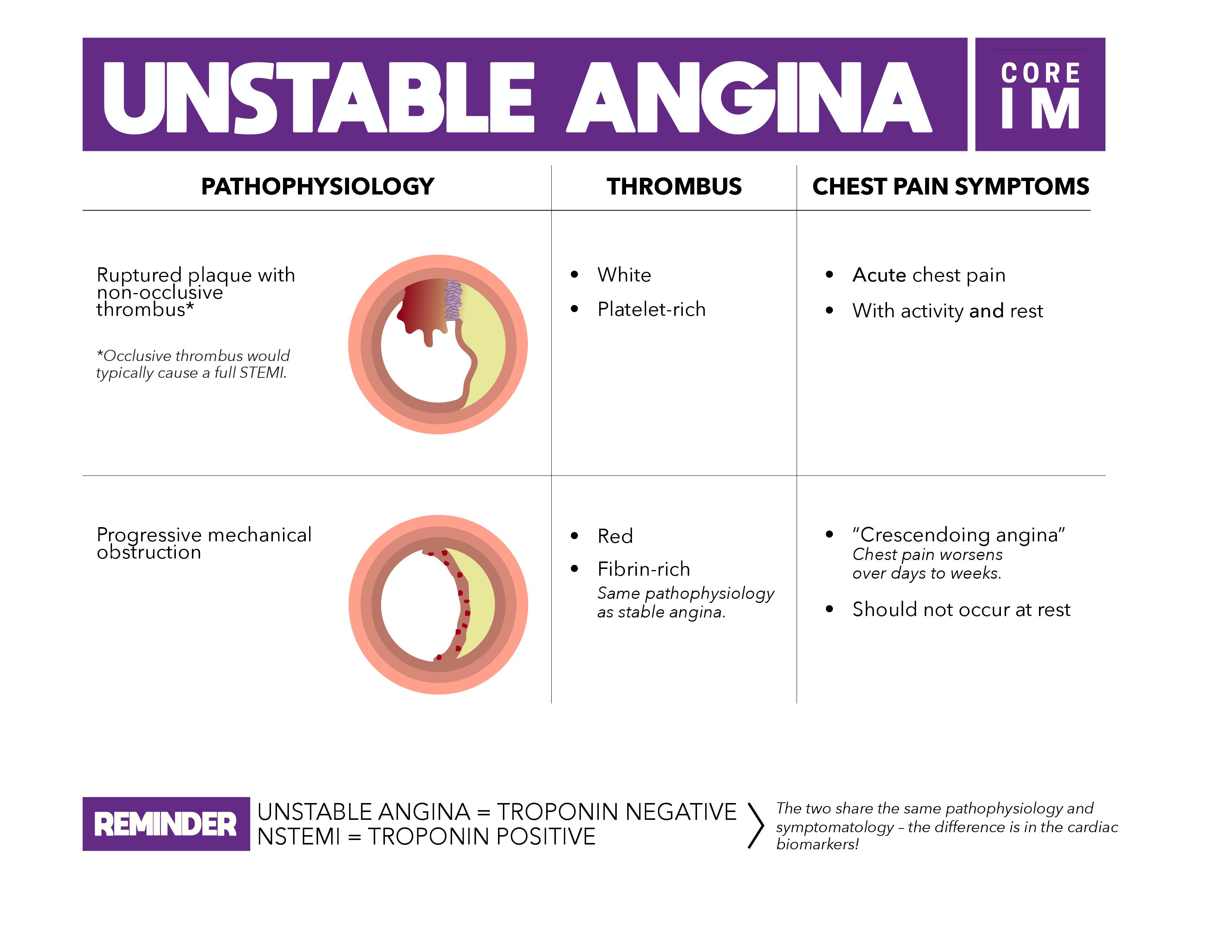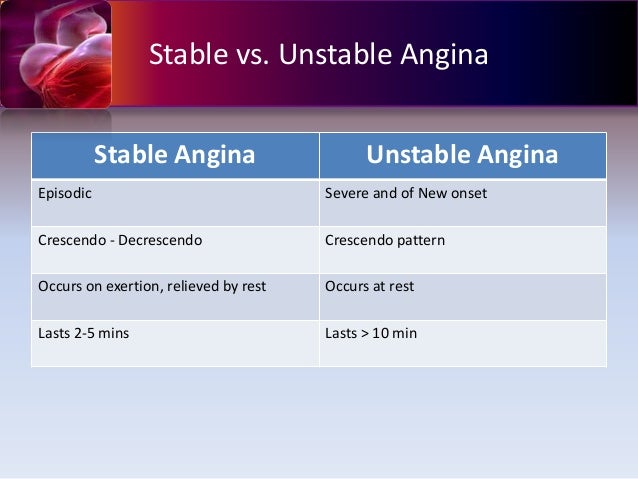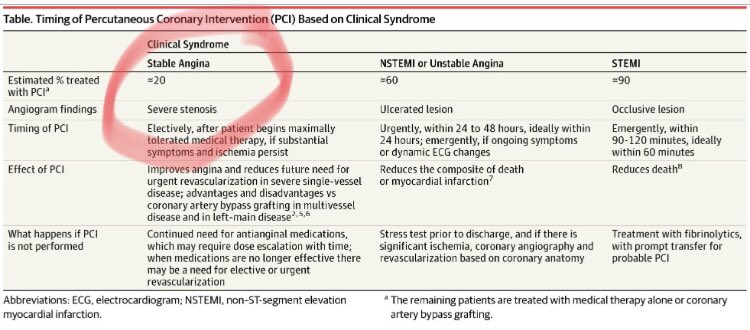Stable Angina Vs Unstable Angina

Unstable angina occurs because a blood clot blocks an artery supplying the heart muscle.
Stable angina vs unstable angina. Unstable angina is chest pain that occurs at rest or with exertion or stress. Unstable angina is when symptoms of chest pressure shortness of breath or any of the others described above occur for the first time or have been happening for less that two weeks. Stable vs unstable angina stable angina occurs with exertion while unstable angina comes on while the patient is at rest. Often a person with angina has pain that sets in after a predictable amount of exertion.
Stable angina occurs because the blood going to the heart muscle is not enough to cover for the extra workload in exercise. Stable angina doesn t typically change in frequency and it doesn t worsen over time. When your pattern of angina has been stable for several months it may be referred to chronic stable angina. The pain in stable angina lasts 2 5 minutes in unstable angina it lasts more than 10 minutes.
Unstable angina differs from stable angina in that the discomfort is usually more intense and easily provoked and st segment depression or elevation on ecg may occur. This is stable angina. The pain worsens in frequency and. The vessel is unable to dilate enough to allow adequate blood flow to meet the myocardial 2 unstable angina the plaque ruptures and a thrombus forms around the ruptured plaque causing partial occlusion of the vessel.
Unstable angina happens when the angina worsens.







/unstable-angina-1745300-FINAL-bc6591effb28413082e53696e8636ae7.png)










